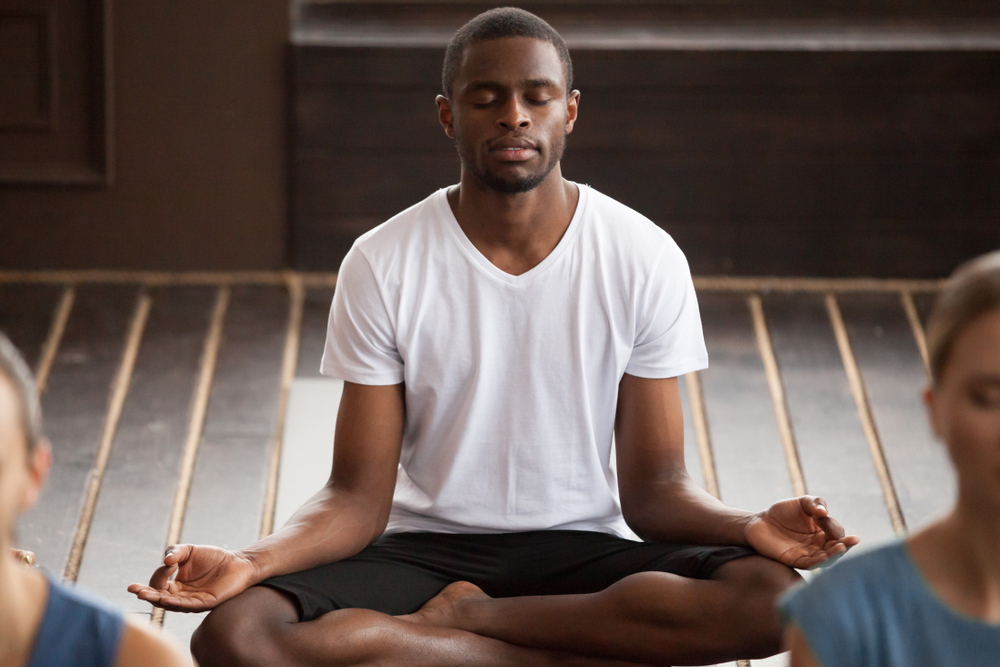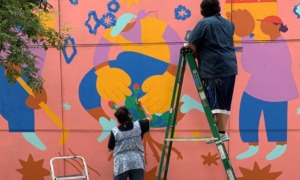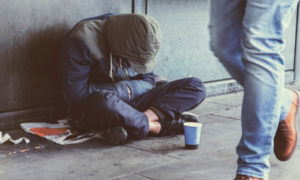Mindfulness and yoga are important factors in ending youth homelessness. I realize this is a bold sentence to write and has the tendency to induce eye-rolls and scoffs. If you are having one of these reactions, I challenge you to stick with me.
There are more than 50,000 people live outside or in unstable housing in Los Angeles County. Almost one-tenth of those individuals are young adults between the ages of 18 to 25. Simply stated, housing (affordable, supportive and permanent) is the key to ending homelessness.
However, in practice, it’s not as simple as it sounds. In the past decade, the gap between available (affordable and accessible) housing and individuals who need housing has grown immensely. Fortunately, the city of Los Angeles and LA County are taking strides to address this issue by expanding funding, resources and types of housing options, implemented predominantly through Measure H and Proposition HHH dollars. However, as we increase resources, including housing, it’s critical to think of what individuals may need and what can support them as they transition permanently out of homelessness.

Robin Petering
Despite the simple answer that housing ends homelessness, actually obtaining housing requires time, resources, meetings, paperwork and persistence. This is true for everyone. It is amplified for the most vulnerable community members who are seeking affordable, subsidized or supportive housing. The housing first model has improved the process and advocated for reduced barriers for gaining these types of housing but, in reality, many individuals still have to demonstrate their “capacity” or “commitment” to receive housing, usually in the form of meetings with case managers and committing to other types of services (mental health, employment, applying for public benefits, etc.). Take a peek into what happens in New York City.
Imagine being in this situation: You didn’t sleep last night. Maybe you were sleeping somewhere where you didn’t feel safe so you spent the night hypervigilant. Today, you have an appointment to meet your housing case manager. To get to your case manager you have to take three buses (almost two hours) but you make it to your appointment.
At this appointment, you have to answer questions about your history of homelessness and other potentially traumatic experiences. This is followed by more paperwork, scheduling more appointments and a lot of waiting. During your previous meeting with your case manager, they told you about an available housing option that could work. Today, they tell you that option is no longer available. You’re going to have to wait.
How to control frustration
How do you feel? Probably disappointed, annoyed and frustrated. How would you imagine you react?
This was an experience of a young man staying in a youth shelter in Los Angeles. At the conclusion of this meeting, he made a heated comment to his case manager, walked out of the room, punched a wall and broke his hand.
This certainly isn’t the ideal way to end a meeting with someone who is helping you find things you need, especially something as important as housing. However, if we think about human physiology for a moment, this reaction could seem normal. In simple terms, the brain is a machine. That brain-machine produces thoughts, feelings, urges and impulses. In your brain, thoughts turn into feelings, which turn into urges. Urges become impulses, which then become actions. Often this chain reaction occurs over the course of fractions of seconds.
Have you ever felt that you had no control or choice over your actions, particularly in a moment of frustration or anger? This happens to almost everyone, but when you factor in the fact that youth experiencing homelessness often are getting limited or disrupted sleep, have scarce access to food and are using substances for survival, these all directly impact prefrontal cortex processing. This reactionary feeling-urge-impulse-action timeline shortens drastically.
For someone going through the process to exit homelessness, it’s common for frustration to turn to a violent eruption in a matter of seconds. Frustrations are valid and an eruption is relatable. However, violent eruptions can come with consequences, including the potential of delaying or temporarily disrupting access to supportive services. In our recent study, we found that 25% of young people experiencing homelessness have had services interrupted because they have been in a fight with another youth receiving services. Additionally, 23% had their housing (shelter, apartment, staying with friends or family) jeopardized because they had been in a fight or conflict.
This is where mindfulness and yoga (often referred to as “mindfulness in motion”) come into play. The regular practice of mindfulness and yoga can give someone a superpower to extend the reactionary timeline, providing options and choices in terms of actions when processing emotions. The practice of mindfulness and yoga is scientifically proven to have a physiological impact, upregulating the parasympathetic nervous system, giving more power to the frontal cortex and the ability to process emotions in times of stress.
In 2018, my longtime colleague and friend, Nicholas Barr, and I developed MyPath: Mindfulness and Yoga Peer Ambassador Training for Health. For years, we had been kicking around the idea of using mindfulness and yoga as a tool to strategically and effectively improve the lives of people experiencing homelessness as well as other groups that are historically marginalized. Mindfulness and yoga can be effective tools for learning how to persevere, cope with adversity, regulate emotions, achieve goals and be effective interpersonally. We were inspired by their own lived experiences and the fact that mindfulness and yoga are incredibly accessible tools for health.
Essentially, these tools are free. You can do them anywhere. Often the biggest barrier for utilizing mindfulness and yoga are cultural barriers, misconceptions and struggles for long-term programmatic sustainability. That’s why we created MyPath as a community empowerment model, training young people to be the change agents in their own community as mindfulness and yoga peer ambassadors.
A new study that I did, in the upcoming print issue of the Journal of the Society for Social Work Research, found that after introducing MyPath in a community of service-seeking homeless young adults, engagement in violence in the overall social network was significantly reduced and levels of consistent practice of mindfulness increased.
Mindfulness and yoga will not solve the immense crisis of homelessness. However, with a theoretically driven, community-engaged and inclusive approach, introducing mindfulness and yoga can strengthen the systems that exist to end youth homelessness.
Robin Petering is the founder and senior researcher at Lens Co, a community-engaged research and advocacy enterprise that combines scientific rigor with real-world experience. Her mission is to empower change for creating an equitable and just society through the strategic and appropriate use of data.
































